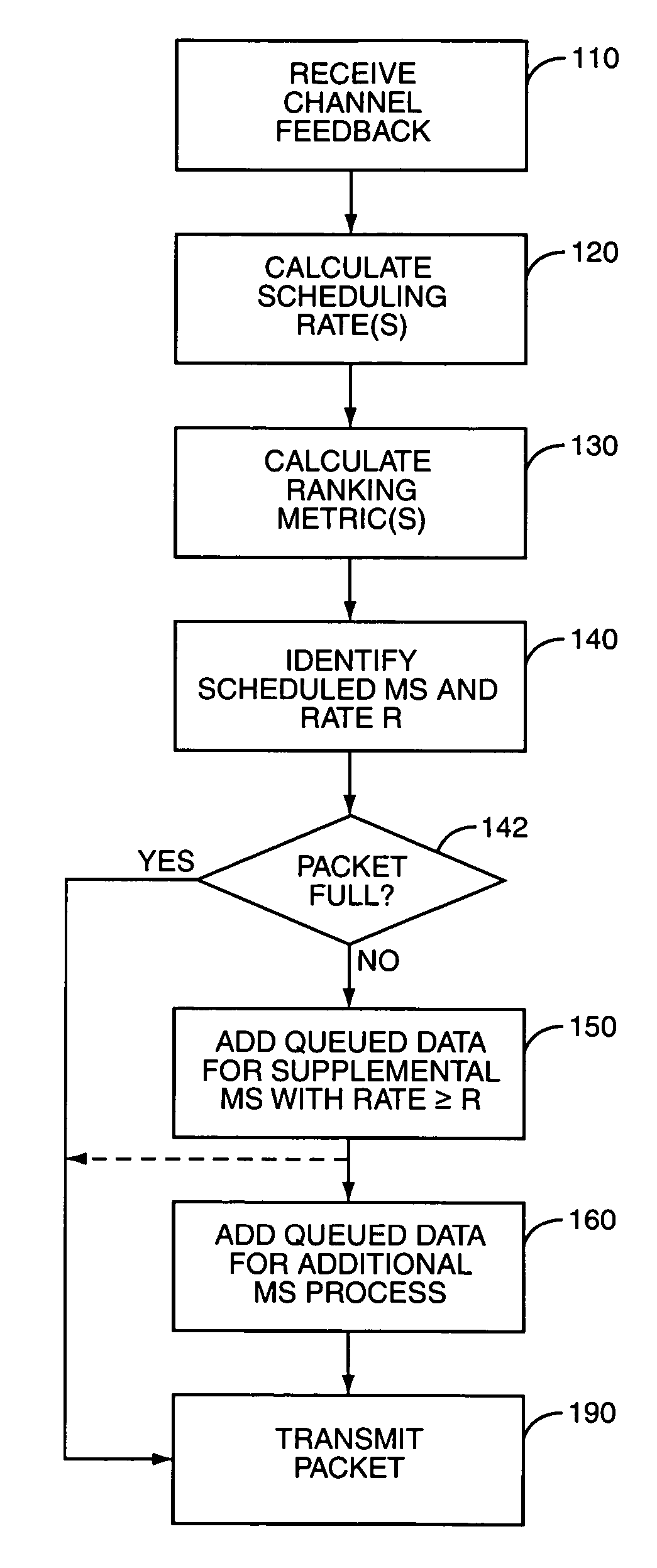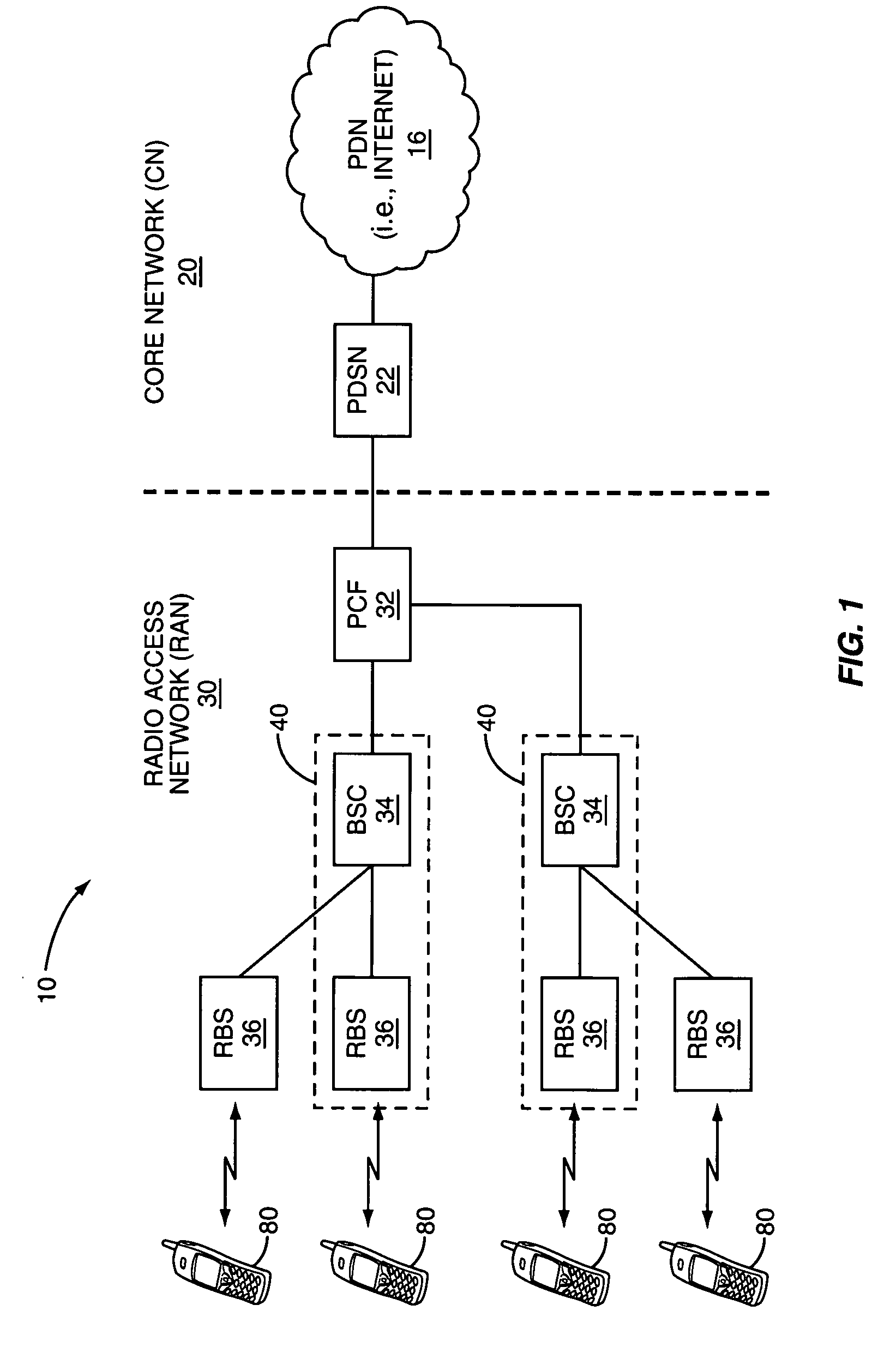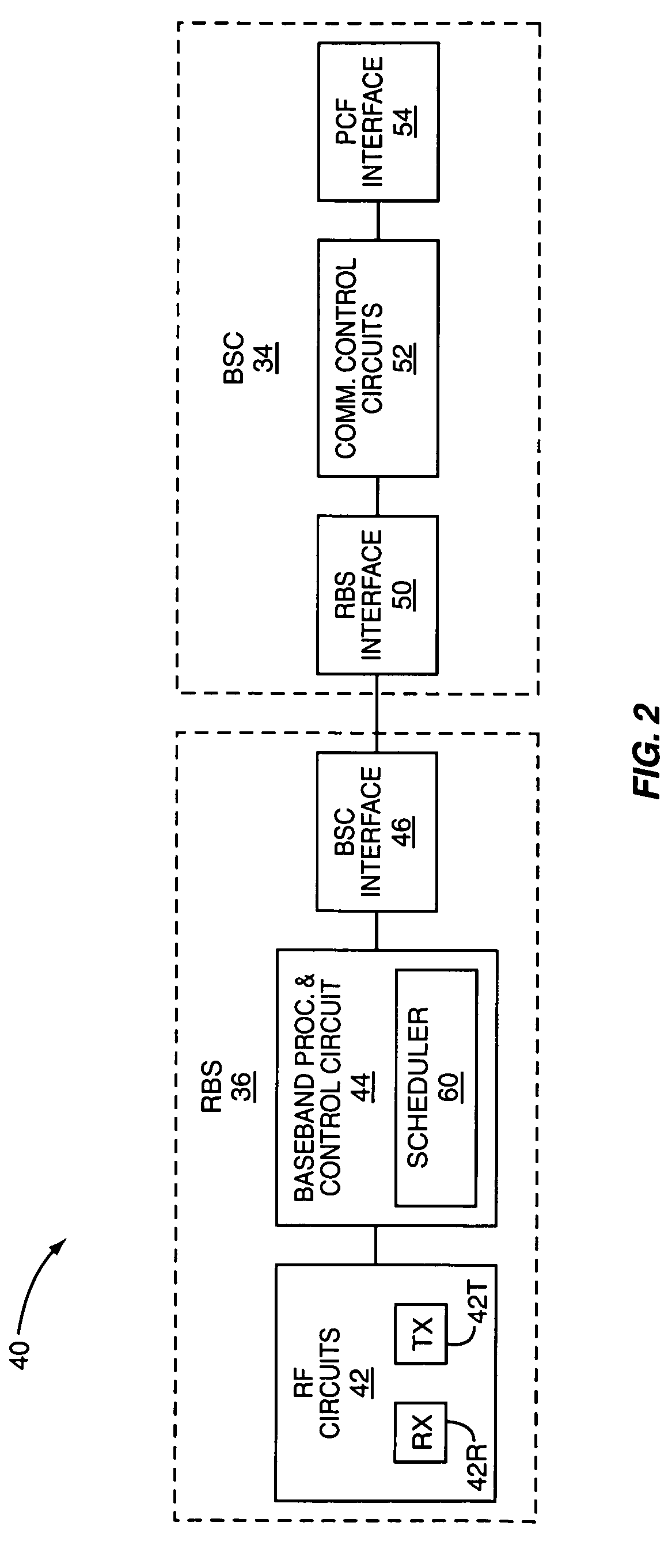Scheduling method for wireless packet data channel
a packet data channel and wireless technology, applied in the field of mobile communication systems, can solve the problems of unacceptably degraded service, unsatisfactory service quality, and relatively short maximum allowed transmission delay, so as to increase the effective capacity of packet data traffic channel, increase urgency, and increase the effect of quality of servi
- Summary
- Abstract
- Description
- Claims
- Application Information
AI Technical Summary
Benefits of technology
Problems solved by technology
Method used
Image
Examples
Embodiment Construction
[0016]FIG. 1 illustrates logical entities of an exemplary wireless communication network 10 that provides packet data services to mobile stations 80. FIG. 1 illustrates a wireless communication network 10 configured according to the IS-2000 standard. Other standards, including 1xEV-DO and WCDMA, could also be employed depending on circumstances.
[0017] The wireless communication network 10 is a packet-switched network that employs a Forward Traffic Channel (FTC) known as the high-speed forward packet data channel (F-PDCH) to transmit data to the mobile stations 80. Wireless communication network 10 comprises a packet-switched core network 20 and a radio access network (RAN) 30. The core network 20 includes a Packet Data Serving Node (PDSN) 22 that connects to an external packet data network (PDN) 16, such as the Internet, and supports PPP connections to and from the mobile stations 80. Core network 20 adds and removes IP streams to and from the RAN 30 and routes packets between the ...
PUM
 Login to View More
Login to View More Abstract
Description
Claims
Application Information
 Login to View More
Login to View More - R&D
- Intellectual Property
- Life Sciences
- Materials
- Tech Scout
- Unparalleled Data Quality
- Higher Quality Content
- 60% Fewer Hallucinations
Browse by: Latest US Patents, China's latest patents, Technical Efficacy Thesaurus, Application Domain, Technology Topic, Popular Technical Reports.
© 2025 PatSnap. All rights reserved.Legal|Privacy policy|Modern Slavery Act Transparency Statement|Sitemap|About US| Contact US: help@patsnap.com



